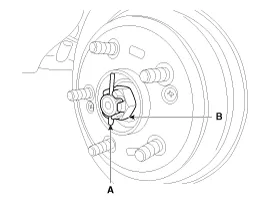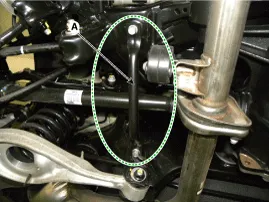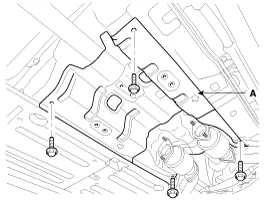Hyundai Genesis (DH): Differential Carrier Assembly / Rear Differential Carrier Repair procedures
Hyundai Genesis (DH) 2013-2016 Service Manual / Driveshaft and axle / Differential Carrier Assembly / Rear Differential Carrier Repair procedures
| Removal |
| 1. |
Remove the rear wheel and tire (A) from the rear hub.
|
| 2. |
With the brake engaged, remove the split pin (A) from the rear hub and remove the castle nut (B).
|
| 3. |
Remove the bracket (A).
|
| 4. |
Remove the muffler.
(Refer to Engine Mechanical System - "Muffler") |
| 5. |
Loosen the mount bolts and then aluminum cover (A).
|
| 6. |
Record the position of the alignment marks (C) on the rubber
coupling of the propeller (A) and companion and the corresponding marks
on the differential carrier (B), and then remove the propeller shaft
tightening bolt (D).
|





